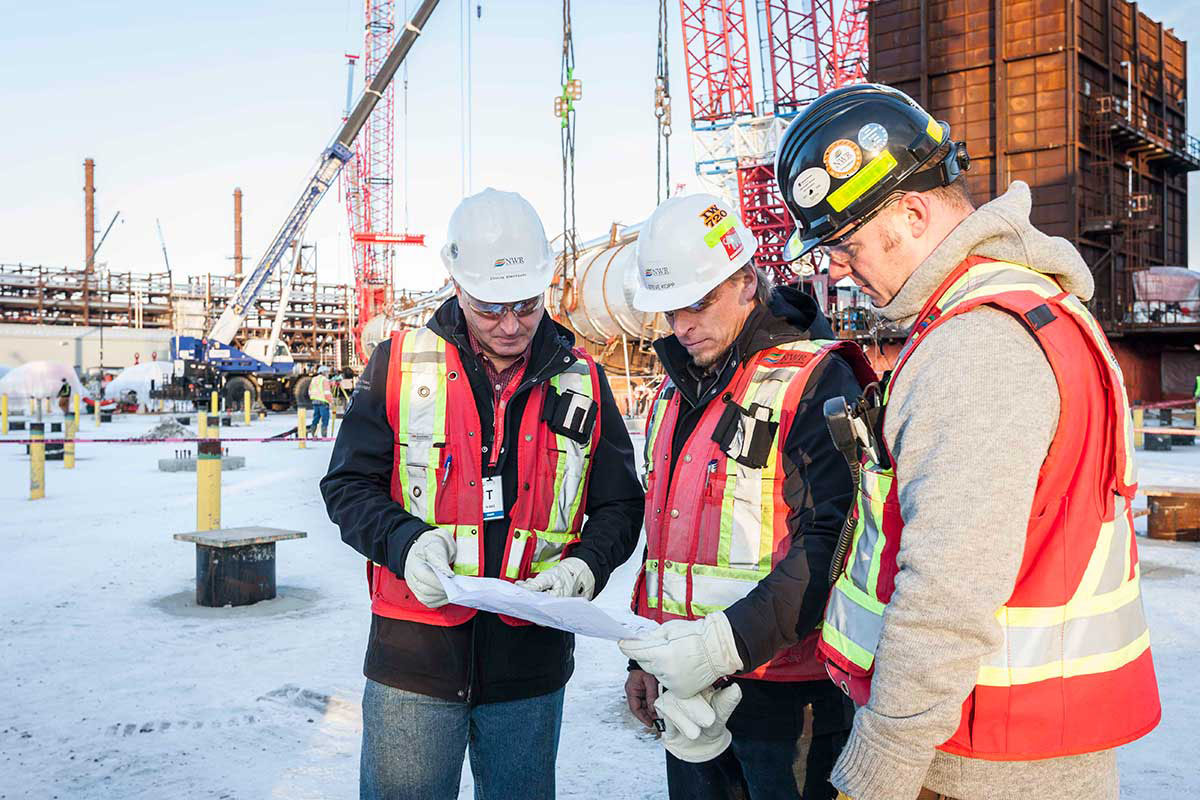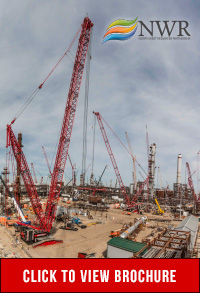Making Oil Refining Safe For The Future
It’s the first refinery to be built in Canada in more than 30 years and if that isn’t attention-grabbing enough, the NWR Sturgeon Refinery will be the first in the world to design and implement key processes aimed at meeting North America’s new standard for lower carbon emissions.
North West Refining Inc., which aims to produce value-added products from bitumen, and Canadian Natural Resources Ltd., one of the world’s largest independent crude oil and natural gas producers, are co-owners in the refinery project. Together, they are making environmental history at a project site 45 kilometres northeast of Edmonton, Alberta. The new bitumen refinery has been designed to capture CO2 emissions from the outset in a way that is safe, profitable and environmentally responsible. Expected to be up and running by the end of this year, the refinery aims to produce high-value products for customers in Western Canada and eventually worldwide as production extends past phase one.
Ian MacGregor is President and Chairman of North West Refining Inc. He has been involved in the project since it began about 12 years ago.
“Alberta’s got lots of resources. Arguably about a third of the world’s oil is in northeastern Alberta,” he said. “The problem with it is high CO2 content because of the heat required for extraction and the CO2 made in the refining process. I don’t think that’s going to be really great for the future of Alberta unless we do things to mitigate CO2.”
The answer was to come up with a process that would refine the oil, capture the CO2 for use in enhanced oil recovery and then leave any remaining CO2 underground, rendering it harmless. The solution wasn’t entirely new. Large oil producers in the U.S. were using a similar process of enhanced oil recovery based on naturally occurring CO2 but in Western Canada there wasn’t any of this type of naturally occurring CO2.
That meant there wasn’t an enhanced oil recovery industry even though there were plenty of reservoirs. “We lacked the CO2 required to get the trapped oil out. That was the opportunity: capture the manmade CO2 from the refining process and use it for EOR,” MacGregor explained.
“All the big guys were saying nobody but us can build refineries,” he said. “I love it, ever since I was a little kid, when somebody tells you can’t do something, that’s what I want to do.”
More than a decade later, the final result is within reaching distance. Much of the credit goes to Canadian Natural who MacGregor describes as “the best partner you could get”. The company is driven not by what looks right, but what is right and their sights are set firmly on the future. Those qualities align well with the values and mission that guide the refinery project.
Many environmental initiatives
MacGregor is clearly proud of the many environmental initiatives that have gone into the refinery’s design. “It’s not just CO2. We took the same approach on every other aspect of the refinery that affected the environment,” he said. “I think the oil industry is always going to be the most vilified industry but I also think, I want to be the least vilified of the most vilified.”
Reducing water usage is one such effort. By incorporating highly efficient water treatment systems and maximizing both air cooling processes and water recycling, refinery operators will be able to cut back on the amount of fresh water drawn from the North Saskatchewan River. The refinery’s design exceeds current environmental guidelines, and MacGregor believes that it will continue to exceed current regulatory standards far into the future. “We’re not building it to comply with the regulations of today but the regulations of 50 years from now,” he said.
Ensuring that the grounds around the site are protected was another environmental concern. The location itself has low soil permeability, reducing the risk of contaminating groundwater. Strict adherence to containment and the handling of stored process fluids, along with a comprehensive groundwater monitoring network, all help to ensure that the groundwater is protected.
Any large development will have an impact on the surrounding wildlife but with the approval of Alberta Sustainable Resource Development, a portion of the lands surrounding the project site have been set aside as a wildlife corridor.
Technology is also playing a role in reducing the refinery’s footprint. Gasification technology used in its operations will significantly reduce the consumption of natural gas and turns the low value “bottom of the barrel” into hydrogen required in the refining process and pure CO2. Low nitrogen oxide (NOx) burners will cut down on the amount of NOx, an air pollutant, that will be produced during the combustion process. The sulphur recovery system will greatly reduce sulphur oxide (SOx) emissions. In fact, it’s expected that the NWR Sturgeon Refinery will only emit about half of the sulphur that is allowed under current strict Alberta regulations.
Surprisingly, MacGregor explained that the new technology doesn’t substantially increase the cost of building a refinery if it is incorporated in the initial design. Where the expense becomes prohibitive is in retrofitting an existing refinery.
40,000 barrels per day
Once up and running, phase one of the new refinery is expected to produce 40,000 barrels of diesel fuel each day and 40,000 barrels of diluent and naphtha. About 4,000 tonnes of CO2 per day (or 1.2 million tonnes of CO2 annually) will be sold to Enhance Energy for use on the Alberta Carbon Trunk Line, a CO2 distribution system with the capacity to transport and store up to 14.6 million tonnes per year — a capacity that is equivalent to the emissions from all of the passenger cars in the province, MacGregor explained. As part of the enhanced oil recovery process, the captured CO2 will be pumped into old oil wells, allowing more oil to be recovered from the rock formations below. Any remaining CO2 eventually turns into calcium carbonate.
“In Alberta, CO2 is a feedstock for a new downstream industry,” explained MacGregor. “It will revitalize old oil fields in the centre of the province and create a generation of new jobs where we need them.”
Another benefit of the refinery project is its impact on employment. Construction labour peaked at between 7,000 and 8,000, and among MacGregor’s proudest accomplishments is the introduction of more women to jobs in trades and the oil industry in particular. NWR has partnered with Women Building Futures (WBF), an Alberta trades training organization for women, to recruit, train and apprentice women in the construction and maintenance of the refinery. So far, about 50 women have been hired to fill roles at the refinery, MacGregor said.
“We had the idea that we could work with Women Building Futures and get a lot more women into the trades here, rather than bringing people in from other parts of the country or world,” he added. WBF prepares women through a course that clearly outlines what to expect from a trades-based career and then NWR facilitates entry into an apprenticeship program at the refinery. “Because they’re so well-prepared, there isn’t a high rate of failure,” MacGregor explained.
“If I feel good about anything, it’s probably that. These are good jobs. What we are building is not just a commercial enterprise; it’s a social enterprise too and you don’t have to sacrifice the commerciality to do the right thing socially,” he said. “Good jobs for Alberta women are the right thing to do.”
Program is changing lives
Among a recent graduating class of ironworkers were 11 women who had gone through the program. MacGregor remembers speaking to one of the graduates, an Aboriginal woman who had struggled with a difficult past and been living in “dire circumstances” before she learned about WBF. Today, she is an ironworker and on a path to personal and financial success. “Anything you can do like that, you’re just feeling great,” he said.
MacGregor’s hope is to keep the profits from oil refining close to home, creating jobs and helping to pay for essentials such as schools and hospitals. And it can be done in a way that lessens the impact on the environment and changes the way people look at fossil fuels and the oil industry. He’s also hoping to create intergenerational jobs for Albertans that will protect their way of life. Making the low CO2 fuels the world market needs from a high CO2 starting point is all part of the challenge. “That’s what protects our future,” he said.
“We’re going to be using fossil fuels for a long time. To me, the most likely outcome is how can I reduce the CO2 cost of those fuels to the minimum and whoever has the best CO2 footprint is going to win,” MacGregor explained. “We’re not finished yet. There’s other things we can do, and we’re looking at them right now.”







